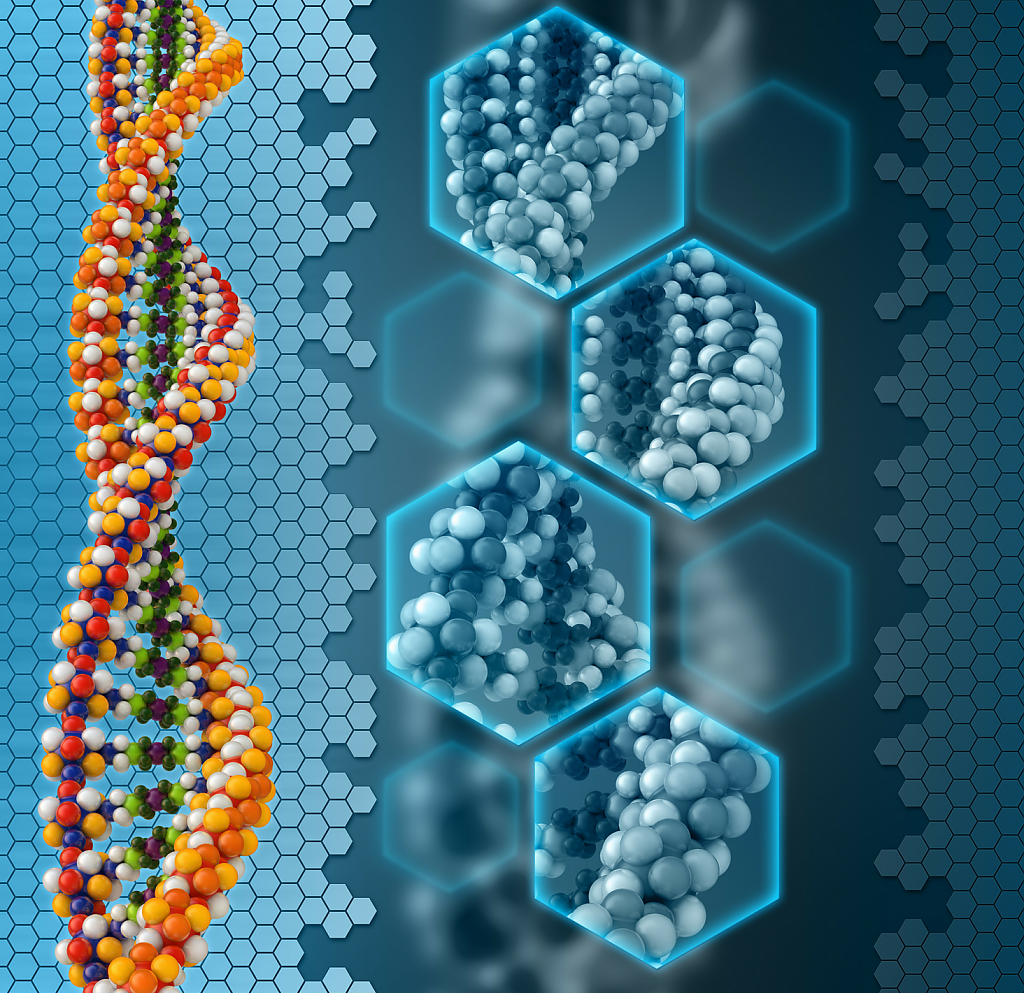Disorders
Medical Genetics in Ophthalmology Genetics
What is Medical Genetics?
Medical Genetics is a relatively recent medical specialty in Portugal and in great expansion all over the world.
Genetics holds the key to what we are in a simple code, but of very complex reading and evaluation. Our code consists of 4 letters (C, A, T and G) that follow each other and in certain regions of our genome they encode proteins. These regions, which are only about 2% of our genome, are the genes. There are around 20,000 known genes and of these about 7,000 associated with diseases.
The study of these genes, from the medical point of view, opens the door to a very useful knowledge and is revolutionizing the way we perform medicine, because it allows:
- the etiological diagnosis of rare pathologies,
- gauging predispositions and susceptibilities to other more common diseases,
- evaluate responses to drugs,
- the selection of the most appropriate therapy for each situation, in an increasingly personalized medicine.
How important is a genetic diagnosis?
The importance of diagnosing a genetic disease is increasing: if on the one hand it allows us to better understand the disease in its clinical component (symptomatic variability, definition of surveillance plans and establishment of prognosis), on the other, it is increasingly a to understand the disease in its basic component (mechanisms of the disease and its application in therapeutic research and the cure of diseases).
Diagnosis is not important just for one's own. Our genetic code is an inheritance: we inherited 23 chromosomes from our father and as many, with different copies for the same information, from our mother; and the resulting 46 chromosomes (23 pairs), we will pass a random selection of one element from each pair to our children.
Thus, a genetic diagnosis is often a family diagnosis. Different genetic alterations have different probabilities of recurrence in the same family. There are several types of Mendelian heredity, examples: autosomal dominant heredity, autosomal recessive inheritance, X-linked heredity.
Genetic diagnosis, with molecular confirmation, allows the identification and surveillance of family members at risk of developing symptoms and offering reproductive options, such as prenatal diagnosis (PND) or pre-implantation (PGD), to all patients with pathogenic variants of the disease.
What is the relevance of Medical Genetics in ophthalmic diseases?
A significant number of ophthalmological pathologies have a genetic etiology, congenital presentation, childhood onset or adulthood. Examples of the first are cataracts and congenital glaucoma, pathology of ocular development such as microophthalmia and anoofthalmia, defects of the anterior segment. The pathology of the retina is also often of genetic etiology, affecting the macula, the cones or the cones and rods.
Taking the example of retinitis pigmentar, at the moment there are more than 2 hundreds of genes identified, involved in different pathways:
- Structural (ex: eyelashes);
- Protein trafficking;
- Photo activation cycle;
- RNA splicing;
- Metabolites.
About 20 to 30% of cases of pigmented retinitis are associated with extraocular symptoms, that is, they present in a syndromic form.
Diagnosis in a syndromic manner is important so that patient surveillance planning contemplates the possibility of different signs and symptoms.
Gene Therapy and Vision
Ophthalmogenesis has been one of the areas of greatest advancement in genetics, especially by the promise of genetic therapies.
Gene therapy aims to use genetic knowledge to treat or prevent disease.
There are several approaches studied:
- Replacement of the defective gene;
- Inactivation of a mutated gene;
- Introduction of a gene with a new function.
Genetic therapies are becoming closer to their realization, by a greater knowledge of molecular pathogenesis (more genes and mechanisms identified), the development of transport modes (eg adenovirus) and advances in genomic editing (eg CRISPR-Cas9) . There are limiting factors for this evolution, on the one hand costs, on the other, and one of the major obstacles to its implementation, the arrival and delivery of the products to the cells.
The eye, by its anatomical characteristics (easily accessible, natural sub-retinal space, easily monitored) and its own immunological mechanisms, has appeared to be a potential candidate for success.
Molecular (genetic) diagnosis has been gaining increasing relevance for therapeutic prescribing and a prerequisite for inclusion in clinical trials.
How do you make a genetic diagnosis?
The clinical diagnosis of the disease by the Ophthalmologist is essential, as well as all the information obtained in this specialty (fundoscopy, ERG, angiography, OCT, microperimetry, etc.).
It is also important to collect the patient's medical history, including family history and heredogram, the age of onset and progression of the disease, the accompanying symptomatology and the complete objective examination (somatometry, facial dysmorphisms, osteo-articular changes, neurological symptoms, cardiac symptoms, others).
In some cases, other laboratory tests (eg glycemia, long chain fatty acids, plasma amino acids, phytanic acid, abetalipoprotein B), imaging (eg renal ultrasound, echocardiogram, ECMR), or even invasive examinations , such as muscle biopsy.
A diagnosis of a genetic disease, after this clinical component, is complemented with a molecular or cytogenetic study, performed by blood or saliva analysis.
The most frequently used technology in this area is Next Generation Sequencing (NGS) sequencing. This technique allows the sequencing of several genes at the same time (from tens to thousands), with good response times (starting at 3 weeks) and at increasingly affordable costs.
At the Genetics office of the Retina's Portuguese Institute we seek to guarantee you access to the best tests available at the present time (quality / price ratio).
Request for Consultation
Make your online request here.
1st Consultation - € 85 and following € 80
Genetic Consultation - €90 (Private only)
See our Agreements and Partnerships!

